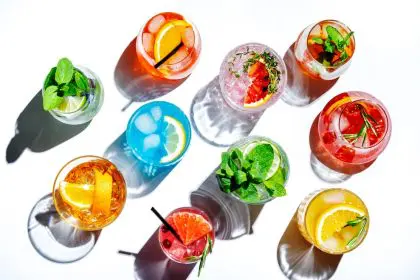The story of American wine is incomplete without acknowledging the pioneering Black vintners who helped shape the industry from its earliest days. While Black-owned wineries constitute less than 1% of the nation’s 11,600 wineries today, their impact on American viticulture runs far deeper than numbers suggest.
The foundation of American wine
During the pre-Civil War era, enslaved African Americans formed the backbone of American winemaking, particularly in the South. At Thomas Jefferson’s Virginia estate, enslaved workers maintained vast vineyards spanning 190 acres, contributing expertise that would influence American viticulture for generations to come.
Breaking new ground
The end of Prohibition ushered in a transformative era for Black participation in the wine industry. In 1940, John June Lewis Sr. emerged as a groundbreaking figure, establishing Woburn Winery in Clarksville, Virginia. His journey into winemaking began with invaluable lessons from his father and deepened during his military service in Germany’s Rhine Valley, where he absorbed centuries-old European winemaking traditions.
Lewis’s return to Virginia in 1933 marked the beginning of a remarkable venture. He cultivated 10 acres of native American grapes, producing both dry and sweet wines that gained popularity across racial boundaries – a significant achievement in the segregated South. His success created a blueprint for future generations of Black winemakers.
Evolution of representation
The 1970s witnessed the emergence of new Black-owned ventures, including Raymen Fedderman’s innovative but brief foray into winemaking in New York’s Finger Lakes region. However, it wasn’t until the 1990s that a significant shift occurred, particularly on the West Coast.
The contemporary landscape
The establishment of Brown Estate in 1995 by the Brown siblings marked a pivotal moment in California’s wine country. Two years later, Iris Rideau made history by becoming the first Black woman to own a winery, setting a precedent for future generations of women vintners.
Today’s wine industry is experiencing a gradual but meaningful transformation. Notable Black-owned brands like McBride Sisters Collection, La Fête Wine, and Theopolis Vineyards are gaining prominence, demonstrating excellence in winemaking while challenging industry norms.
Building lasting change
The wine industry’s transformation extends beyond ownership. Educational institutions specializing in wine studies report increasing enrollment from Black students, while organizations like the Association of African American Vintners, Wine Unify, and Roots Fund are creating pathways for aspiring Black wine professionals.
These organizations provide crucial mentorship, educational resources, and networking opportunities, addressing historical barriers to entry in the wine industry. Their work encompasses everything from scholarship programs to professional development initiatives, ensuring that the next generation of Black wine professionals has the support needed to succeed.
Looking forward
The future of American wine is increasingly diverse, with Black winemakers and industry professionals bringing fresh perspectives to traditional practices. This evolution reflects a broader cultural shift toward inclusivity in luxury and craft industries, with consumers increasingly seeking out wines that reflect the full spectrum of American creativity and expertise.
Modern Black winemakers are not just producing exceptional wines; they’re reshaping industry narratives and creating spaces for future generations. Their success demonstrates that excellence in winemaking knows no racial boundaries, and their innovations continue to enhance America’s wine culture.
The growing presence of Black professionals in every aspect of the wine industry – from vineyard management to distribution and marketing – signals a promising transformation. While progress remains gradual, each success story adds momentum to the movement toward a more inclusive wine industry.
A legacy in progress
The story of Black winemakers in America is one of persistence and innovation. From the unacknowledged contributions of enslaved vintners to today’s award-winning Black-owned wineries, this legacy continues to unfold. As more Black professionals enter the industry, they bring with them not just technical expertise but also fresh perspectives that enrich American wine culture.
The wine industry’s future depends on its ability to embrace diverse voices and experiences. By acknowledging its complex history while supporting new generations of Black wine professionals, the American wine industry moves closer to reflecting the true diversity of its heritage and potential.
This ongoing transformation serves as a reminder that the best wines often come from unexpected places and people. As barriers continue to fall, the American wine industry stands to benefit from the full spectrum of talent and creativity that diversity brings, ensuring its continued evolution and excellence for generations to come.












